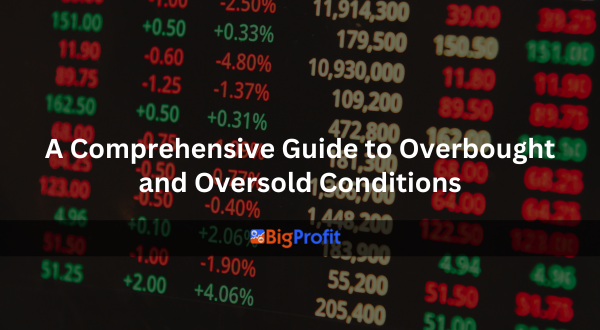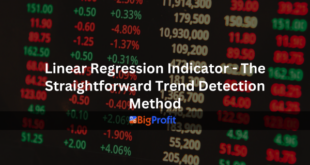The stochastic oscillator is an increasingly popular momentum indicator used in technical analysis. You can adjust its parameters such as its period (%K and %D values) but most trading strategies use their default settings of 14 days each for both.
Lane describes that the Stochastic Oscillator measures the speed of price action movement rather than its direction, and can detect market reversals by showing divergences in its signal lines.
Overbought
The Stochastic Oscillator, or stochastic indicator, is a technical charting tool that allows traders to easily identify overbought and oversold conditions as well as market divergences – both essential components of successful trading strategies.
The indicator measures the speed at which an asset’s price moves relative to its high-low range over a set period, typically 14 days. This information is then used to create a number that can be compared with overbought and oversold levels, giving traders an opportunity to anticipate potential reversals of trend and make informed trading decisions.
When the %K line of a stochastic scale rises above 80, it can signal overbought conditions and signal potential market reversal. When this happens, traders should look out for opportunities to sell an asset when the %K line drops below this mark.
Calculating the %K line requires subtracting the low from the high for an asset during its period and then dividing its closing price by its range; then divide this by 60 for moving average calculations; this indicates an asset is oversold.
There are various types of Stochastic Oscillators, both fast and slow ones, each offering unique insights. Fast stochastic oscillators tend to react more rapidly when price fluctuations occur, providing early warning of overbought/oversold situations; on the other hand, slower stochastic oscillators tend to be less reactive, thus decreasing false signals.
No matter which indicator type you utilize, it is always advisable to crosscheck any market signal that appears on your charts with another indicator such as Relative Strength Indicator or Bollinger Bands to ensure its accuracy and avoid taking unnecessary risks with your capital.
Once you understand the Stochastic Oscillator and its functions, you can explore its application in your thinkorswim paperMoney(r).
Oversold
Stochastic is a momentum indicator that compares an asset’s closing price with its high and low prices over a specified period, usually 14 days, to determine overbought and oversold levels, providing traders with possible buy/sell signals. While the stochastic indicator does not necessarily signify direction of overall trend; rather it can identify trading ranges; therefore it is essential to understand market direction prior to taking trades based on overbought/oversold conditions.
Calculating a stochastic oscillator requires two lines known as %K and %D; these represent actual oscillator values from each session and their three-day simple moving average respectively; when these lines cross, there has been an abrupt shift in momentum; generally speaking, readings above 80 on a stochastic chart indicate overbought conditions while readings under 20 indicate oversold conditions.
As traders should be mindful that strong trends may continue for extended periods, it is imperative that they use the stochastic indicator in conjunction with other tools and indicators, as well as conducting thorough market analyses.
As with the RSI, one of the moving average lines on the stochastic oscillator tends to react quicker than the other; therefore, faster moving lines tend to warn traders sooner of an overbought or oversold condition than their slower-acting counterparts.
The chart below depicts an example of stochastic oscillator showing two lines crossing and producing a bullish signal; it’s important to remember, though, that they crossed in an overbought zone rather than below an oversold zone and thus would have produced a sell signal instead.
An essential consideration when using the stochastic oscillator is that it may give false signals in a ranging market, so traders must combine it with other indicators and charting tools in order to identify optimal trading opportunities.
Crossover
Stochastics are displayed as two lines on a chart: the %K line (solid green in this example) and the %D line (red dotted line). When these two lines cross over each other it signals that a shift in momentum could be on its way, so it is essential that one reviews all indicators which could signal this change in momentum.
The %K line is calculated by subtracting the low from most recent closing price and dividing by 14 trading days, while %D represents three-day moving average of %K. As prices increase, so too will %K rises; when it peaks above 80 it indicates overbought instruments while when prices decrease and it falls, %D drops until crossing below 20 as an indication of oversold instruments.
Similar to its cousin the relative Strength Index (RSI), stochastic is also a momentum indicator; however, one key difference between them lies in their respective threshold levels for overbought or oversold conditions: with RSI needing to reach 70 to signal any such condition before moving into overbought territory whereas stochastic has an 80 threshold threshold when entering such territory.
The stochastic is often compared to RSI because both indicators rely on an assumption that closing prices should follow an upward or downward trend. Both indicators can be used to identify future price direction as well as provide various signals including crossovers between K and D %Ks or divergences and overbought/oversold conditions.
There are various variants of the stochastic oscillator, each with their own set of parameters and calculation methods. A faster stochastic will generally respond more quickly to market changes while slower ones have reduced false signals. No matter which one you choose, it is important to experiment with various settings on your trading platform before selecting which one best matches your strategy. It should also be remembered that momentum indicators like stochastics may occasionally produce false crosses requiring patience before acting upon any signals received.
Divergence
Stochastic oscillator is a momentum indicator, but unlike most others it follows momentum changes rather than volume or price changes. Therefore, it can provide traders with buy/sell signals before actual market direction shifts occur, as well as helping validate signals from Bollinger Bands or Relative Strength Index indicators.
Simple calculations make this indicator simple to comprehend, making it ideal for use by novice traders. A 14-day default setting should work well but can be modified according to individual trading styles. The indicator consists of two lines – Fast Stochastic Oscillator line or %K and Signal Line commonly known as %D which serves as 3-day simple moving average of %K line.
Traders can generate sell/buy signals when the %K line crosses below or above the %D line in either overbought or oversold regions, respectively. This usually happens when it drops below or rises above the 20-band, representing oversold or overbought conditions, respectively.
When the Stochastic Oscillator’s %K line rises above 80, this can indicate overbought conditions which could signal potential price reversal. Conversely, if it falls below 20, this typically signals oversold conditions and an opportunity for price reversal.
Divergence is another vital signal generated by the Stochastic Oscillator. A negative divergence occurs when an indicator moves higher while price falls, while positive divergence refers to when an indicator falls while price rises.
The Stochastic Oscillator is an invaluable indicator that can be used to pinpoint overbought and oversold conditions in the market, as well as trend reversals by tracking price movements relative to relative strength indicators such as Relative Strength Index or Bollinger Bands. When acting upon Stochastic Oscillator signals, traders should remember their comfort zone, tread cautiously when acting upon any signals, and always verify any such market signals with technical indicators such as Relative Strength Index or Bollinger Bands before taking any actions.
 BigProfit Profit through Algo & Technical Trading
BigProfit Profit through Algo & Technical Trading




